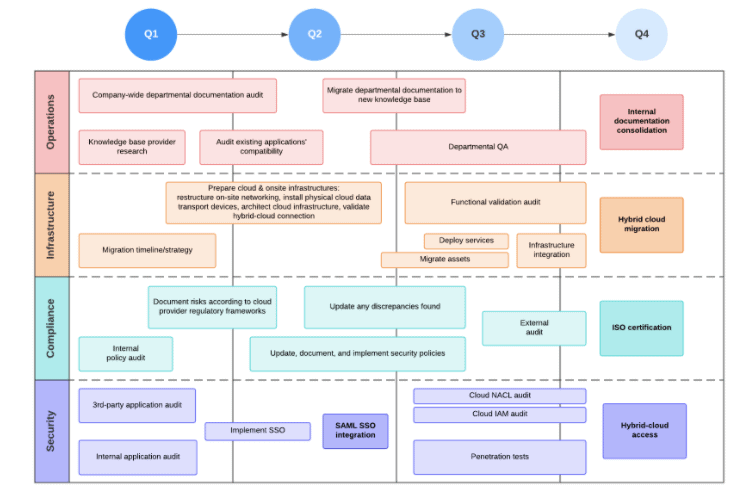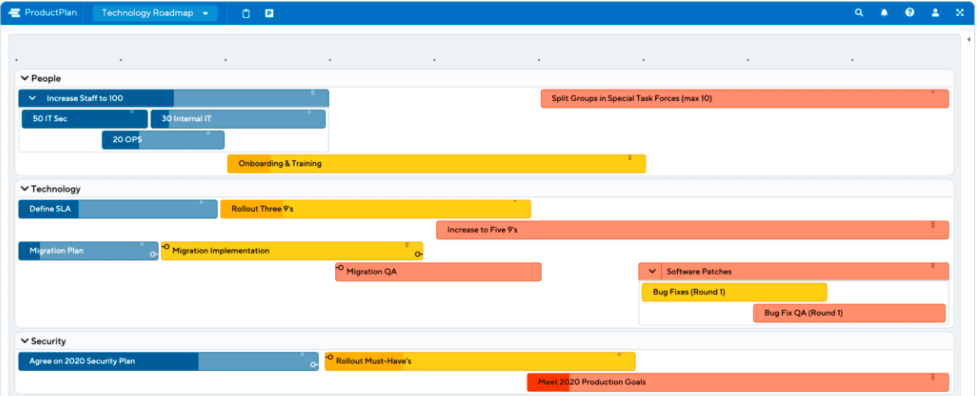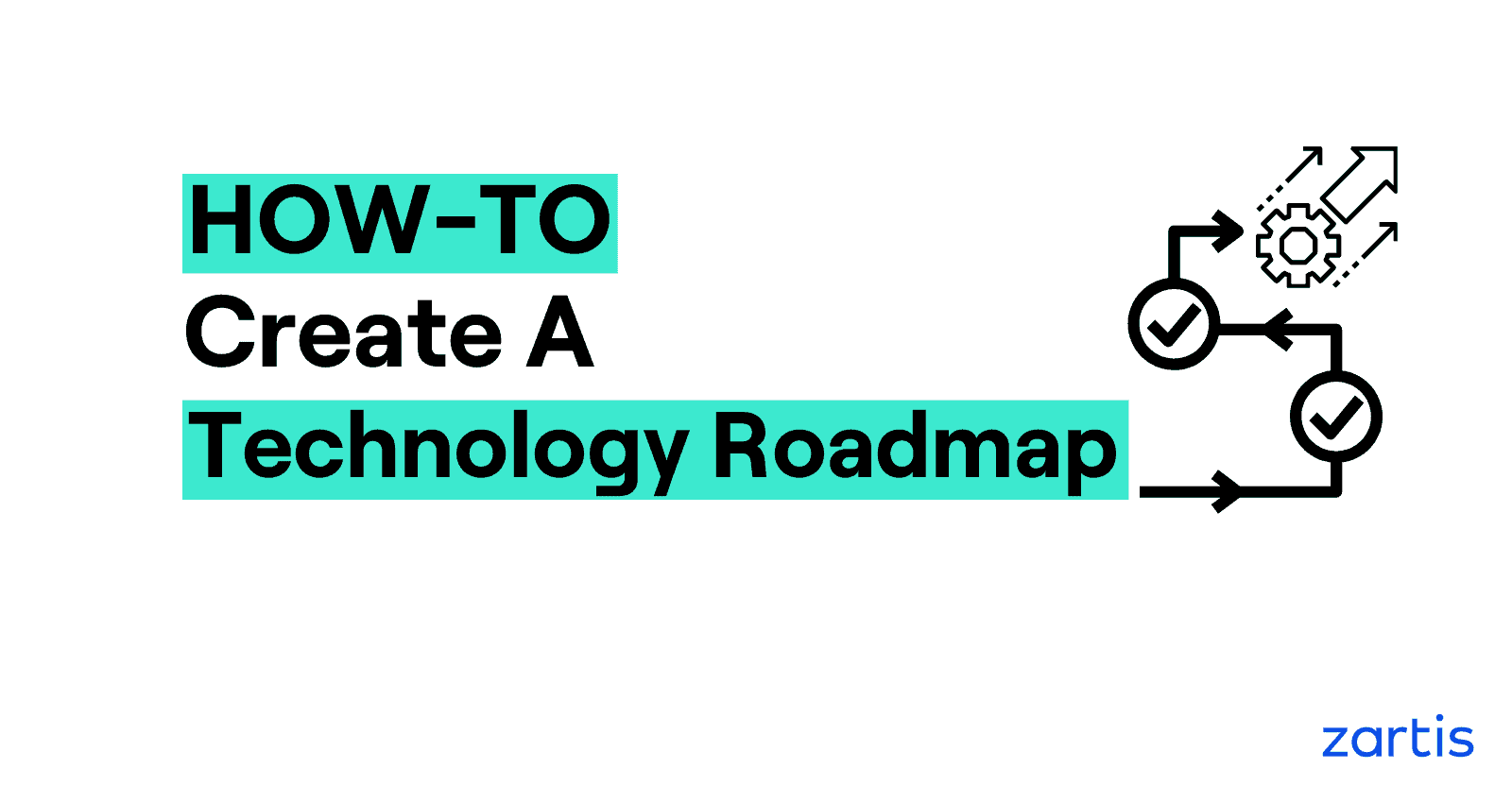Incorporating technological innovations in your business is a must if you want to stay relevant in today’s competitive, fast-paced market.
That said, changing your tech infrastructure can certainly be challenging and does not come without its risks. To get the most out of any new technology, you should plan the transition carefully and well ahead of time — often months in advance. Strategic roadmapping is one of the most effective ways to do that.
A well-thought-out technology roadmap can help you:
- Define your objectives and key priorities
- Identify potential roadblocks
- Allocate resources properly
- Break down large goals into smaller, actionable tasks
What Is a Technology Roadmap?
A technology or IT roadmap is a planning technique that businesses use when developing or introducing complex tech solutions. Roadmaps enable long-term strategic planning of products and processes by setting out clear goals, action steps, time frames, risk factors, and other essential elements of technology implementation.
How Is a Technology Roadmap Different from a Software Development Life Cycle?
A software development life cycle (SDLC) is a methodology used by development teams as a preliminary phase to creating software products. By laying out all the steps involved in the development process — from the initial gathering of requirements through design and coding to testing and maintenance — an SDLC enables dev teams to build technology in a systematic, efficient, and cost-effective way.
Unlike SDLCs, which only pertain to software development, technology roadmaps can also be used to plan the implementation of already existing software. For instance, you may use roadmapping when migrating to the cloud or modernizing legacy software.
SDLCs also tend to be rather detailed, whereas roadmap tools typically provide more of a bird’s eye view and can be used to explain tech processes to a non-developer audience.
How to Develop a Technology Roadmap
Are you planning a new technology solution? Here is how to create a technology roadmap and set yourself up for success.
Key Components of a Technology Roadmap
- Strategic business goals. Include both the short- and long-term goals you are looking to achieve through your new tech solution.
- Milestones. Break down broader goals into actionable milestones tied to specific time horizons. This can help you track and evaluate your progress over time.
- Risk factors. Identify possible threats to the successful implementation of your project and come up with potential solutions.
- Resources. Carefully plan out the time, capital, human, and other resources you will need.
- Status reports. These help keep all relevant stakeholders up to date with the progress.
- New system capabilities. Outline the new capabilities to be provided by the new tech solution.
- Release plans. Release plans help you set smaller goals and action items.
- Training. Always account for training to ensure your personnel can hit the ground running when working with the new solution.
The 7 Basic Steps of Tech Roadmapping
#1. Set Strategic Objectives
Start drawing up your technology plan by answering why you want to invest in the proposed tech solution in the first place. Think about your key priorities, what you are looking to achieve, and how the new technology may benefit your business in the long term.
#2. Identify Your Audience
Make sure to use language and concepts your audience will understand and consider creating several roadmap variants for all key stakeholders. You may want to cut back on the tech vocabulary if you are building a roadmap for, say, sales and marketing professionals.
#3. Define Your Themes and Epics
Translate your strategic business objectives into action items. Start with the highest-level actions, also known as themes, and then break each one into smaller tasks or epics.
#4. Consider the Risk Factors
List as many potential roadblocks to success as you can think of and propose possible solutions.
#5. Distribute the Roadmap to All Relevant Stakeholders
When your technology plan is ready, call a meeting (or meetings) with all key stakeholders to present the roadmap. Make sure your plan has a clear, compelling message about how the proposed technology infrastructure can help your business — and expect a lot of questions.
#6. Hand Out Individual Tasks
Meet with your internal teams to assign responsibilities and set implementation time frames.
#7. Review Your Roadmap
Once the project is underway, be sure to stop and reevaluate the roadmap often to track your progress and update the plan as needed. Technology roadmaps often take months to complete, and your priorities may change many times throughout that period.
Technology Roadmap Examples
Feel free to use these technology roadmap templates as inspiration for building your custom tech plan:

Note the division by quarters and themes (operations, infrastructure, compliance, security). Detailed roadmaps like this one can be used for non-developer audiences, as they may need more clarification of specific concepts or steps.

This less detailed template provides a broader overview of the process. Note the dedicated risk management section.

A straightforward roadmap with just three fairly general themes (people, technology, security) and less specific headlines.
Benefits of a Technology Roadmap
A well-thought-out IT roadmap can enable you to:
- Understand dependencies and prepare contingency plans
- Share your vision with key stakeholders
- Strategize your short, mid, and long term more easily
- Track progress and stay on plan
- Ensure a smooth transition to new tech solutions
Innovation and Technology Roadmapping
There is more to building technology roadmaps than mere agenda setting. By getting you to focus your attention on how you could achieve your strategic priorities through targeted technological investment, they help underscore the importance of enabling innovation in the long term. Exploring and incorporating modern technology should be a major part of any business strategy.
Of course, not every organization will have the capacity to develop or implement innovative technology in-house. And if you are not in the IT sector, you may not even know where to begin.
In that case, you may want to consider using external resources. Our innovation outsourcing services can help you stay on top of the latest technology developments, pioneer breakthrough innovations, and take your business to the next level — and far ahead of your competitors.
Need Help Building an Effective Technology Roadmap?
Our technology consulting services can set your business on the path to successful digital transformation.


